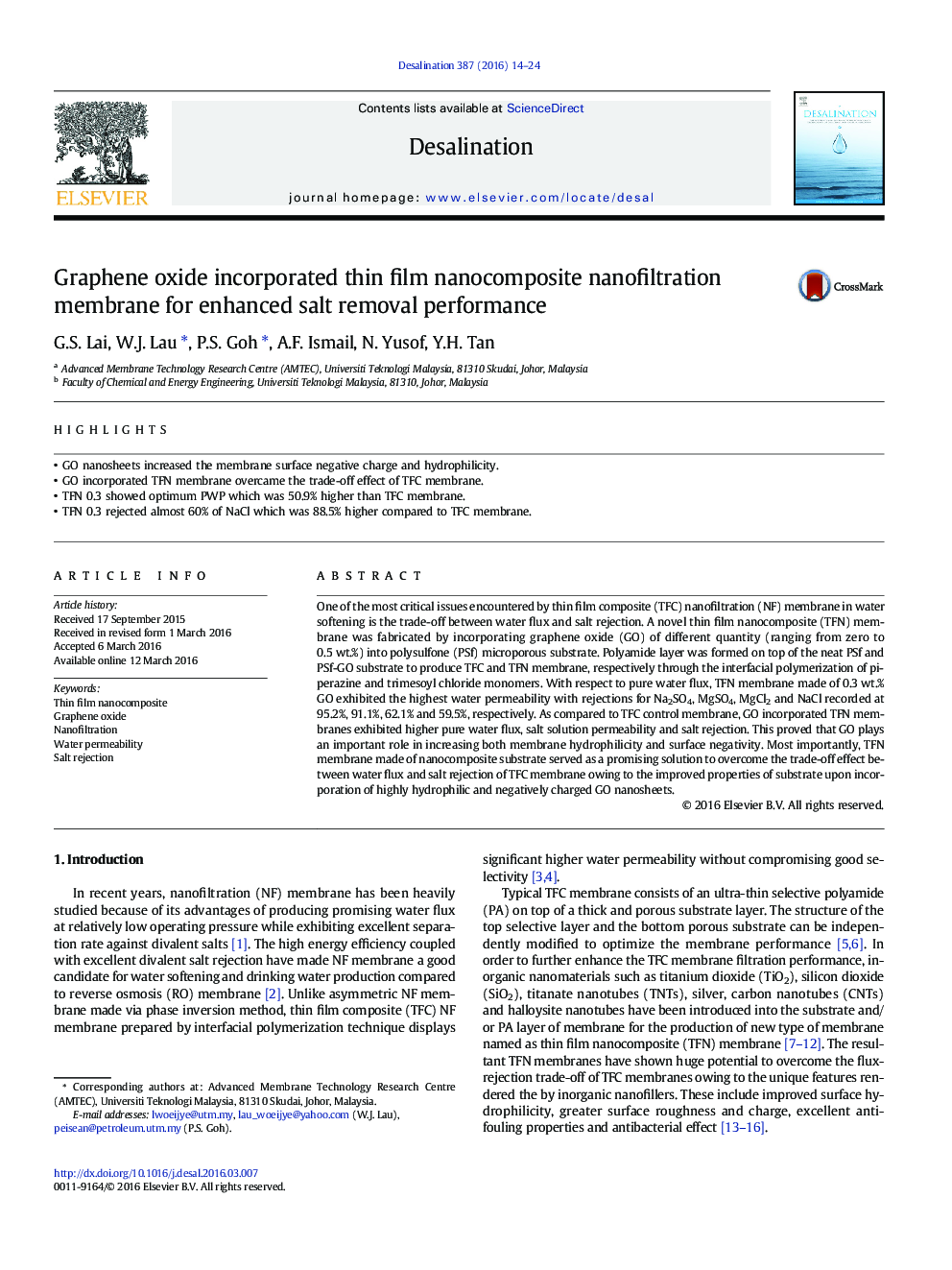| کد مقاله | کد نشریه | سال انتشار | مقاله انگلیسی | نسخه تمام متن |
|---|---|---|---|---|
| 622885 | 1455308 | 2016 | 11 صفحه PDF | دانلود رایگان |
• GO nanosheets increased the membrane surface negative charge and hydrophilicity.
• GO incorporated TFN membrane overcame the trade-off effect of TFC membrane.
• TFN 0.3 showed optimum PWP which was 50.9% higher than TFC membrane.
• TFN 0.3 rejected almost 60% of NaCl which was 88.5% higher compared to TFC membrane.
One of the most critical issues encountered by thin film composite (TFC) nanofiltration (NF) membrane in water softening is the trade-off between water flux and salt rejection. A novel thin film nanocomposite (TFN) membrane was fabricated by incorporating graphene oxide (GO) of different quantity (ranging from zero to 0.5 wt.%) into polysulfone (PSf) microporous substrate. Polyamide layer was formed on top of the neat PSf and PSf-GO substrate to produce TFC and TFN membrane, respectively through the interfacial polymerization of piperazine and trimesoyl chloride monomers. With respect to pure water flux, TFN membrane made of 0.3 wt.% GO exhibited the highest water permeability with rejections for Na2SO4, MgSO4, MgCl2 and NaCl recorded at 95.2%, 91.1%, 62.1% and 59.5%, respectively. As compared to TFC control membrane, GO incorporated TFN membranes exhibited higher pure water flux, salt solution permeability and salt rejection. This proved that GO plays an important role in increasing both membrane hydrophilicity and surface negativity. Most importantly, TFN membrane made of nanocomposite substrate served as a promising solution to overcome the trade-off effect between water flux and salt rejection of TFC membrane owing to the improved properties of substrate upon incorporation of highly hydrophilic and negatively charged GO nanosheets.
Journal: Desalination - Volume 387, 1 June 2016, Pages 14–24
